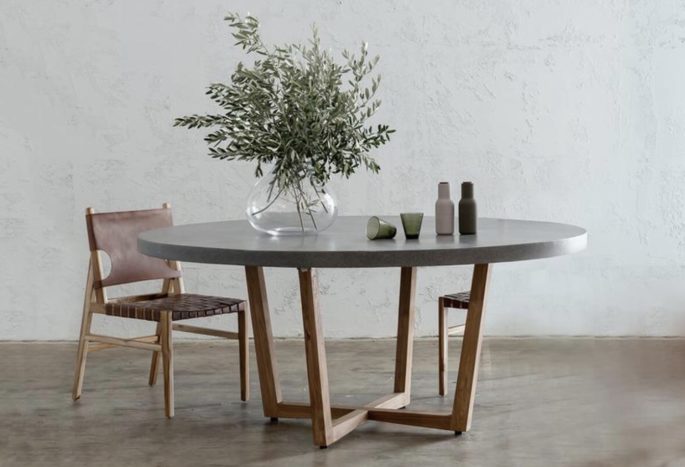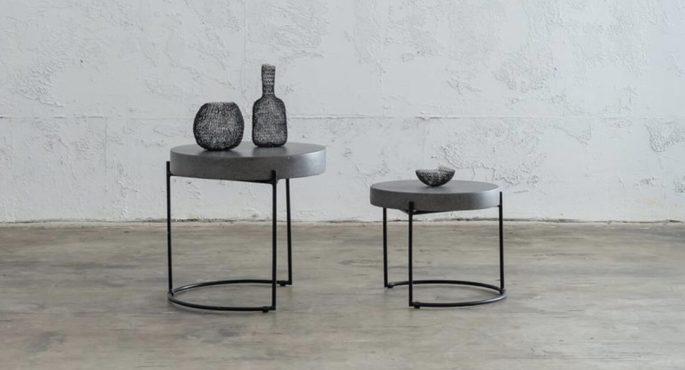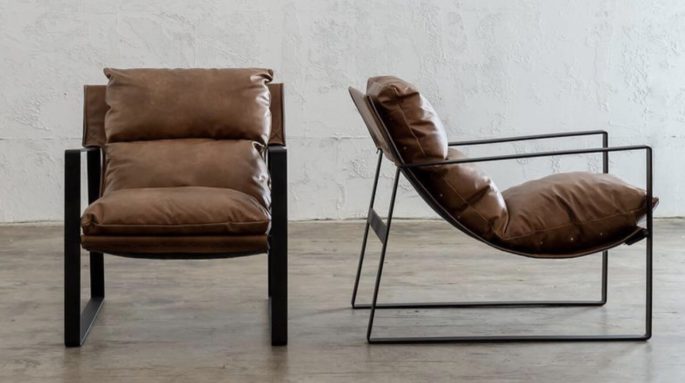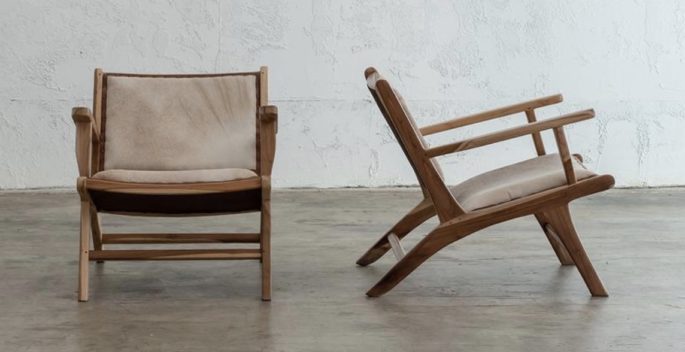While older people are reluctant to buy big-ticket design items online, Generation Y has inspired direct-to-consumer digital retailers that slash the risk, cut the costs and amp up convenience.
Are you experienced? New digitally native brands are obsessed with making the customer experience painless, in large part because they fear a social media backlash.
“Basically, I didn’t see a risk,” says Eddie, a young 24-year-old student of paying $1,045 for a sofa he’d never sat on or touched. The sofa in question, a two and a half seater, handsomely tailored in a grey called Crushed Gravel, comes from the website of new American furniture company Burrow. It paid for the shipping and was prepared to cover return costs, too, if the buyer found the sofa wanting upon arrival. A year later, the student reports that his comfortable divan has held up well, and he shrugs off what some might call a leap of faith: “I thought it was worth a try.” Read more, ‘Decorating on a Budget: Insider Secrets.’
Call it the millennial decorating difference. More-mature folk, who didn’t learn their ABCs on an LCD screen, cringe at the prospect of an unwanted sofa hulking in their homes, and the anxiety of coordinating its removal. Older people still like to see and feel, especially with a significant investment.
Millennials, on the other hand, are in that digital universe, integrated into the idea of buying and returning and it’s not a big deal.
For shoppers of a certain age, that need for tactile testing is a huge deal. That and an unfamiliarity with “millennial brands” that market via social media are keeping them from taking advantage of the efficient, direct-to-consumer, mostly digital companies disrupting the furniture, mattress and homewares industries. People over 45 buy only about a third of US luxury bed linen brand Brooklinen’s luxury bedding, for example. Still, the 4-year-old company, which opened its first pop-up shop in New York only this year, says it recently reached cumulative sales of $100 million with a strategy common to these upstarts: competitive prices, a carefully tweaked customer experience and generous return options that minimise risk. Read more, ‘Are You a Comfort Addict and Utterly Addicted to Indulgence.’
Sites such as Brooklinen are obsessed with keeping buyers satisfied for mostly one reason: the threat of social media backlash. A disgruntled purchaser can tweet dissatisfaction that goes viral. “That’s death!” said Edgar Blazona, founder of BenchMade Modern, which sells custom sofas through its website. “We do everything we can to not get that scenario. Sometimes it stings, it’s expensive, but we do it to inspire confidence.”
Another obsession? Uncluttered web interfaces. Companies that interact with customers mainly via the internet seek out an aesthetic that’s more editorial than commercial. Products are crisply silhouetted against white backgrounds, airily presented in rows of two or three. Language is spare and charismatic, as in 5-year-old South Australia furniture brand Living By Design, a successful disrupter who can barely keep up supply for its beautiful pieces that have been an instant hit with top designers, hotels and magazine editors since launching. They’ve worked hard to edit the industry down to the essential lifestyle designs most consumers look for.
The company is nimble, and are achieving ever-faster speed to market. Living By Design’s site itself is better and more well-thought-out than mainstream sites you look at. It launched with mortar-and brick stores plus a non-mind-numbing online offering and expanded collections as they grew with dining tables that pull everything together. Dining chairs that are comfortable, chic and unobtrusive. Plus sofas that are so good. Trying to sort the options at mainstream retailers can be oppressive. Read more, ‘How to Decorate: Making a Big Impact on a Small Budget.’
Transparency, convenience, quality, newness, sustainability, all rate highly on millennial and disrupter sites and it seems the over 45s are catching on.
Newcomer Dims. currently offers just four tables by five up-and-coming designers and will add seating in early 2019. Joybird, acquired by La-Z-Boy began in 2014 with 10 collections and, after reporting $55 million in annual sales in 2017, now offers 35. “The once-niche modernist market overall has grown significantly in the past decade,” said BenchMade Modern’s Mr. Blazona, but he’s not opposed to selling a rolled-arm love seat if demand merits it. “As our customer demographic evolves, ages or broadens, we would certainly consider adding more traditional styles.”
The prevailing aesthetic tends toward the contemporary and clean-lined.
Simple decision trees help you make your choice. Transparency rates highly for a typical millennial or disrupter site. Along with the specifications for its assembly-required tables, sofa and platform bed, Floyd includes line drawings depicting exactly what pieces will arrive and in how many boxes. At Burrow, a model photographed recumbent on one of its couches is helpfully identified as being 6 feet, 1 inch tall, preventing surprises of scale.
Love of planet is a factor, too. When Yardbird co-founder Jay Dillon researched factories in Asia to source his furniture, he was so appalled by plastic litter he saw along the waterways that he vowed to incorporate the stuff into his product. His site reports that Yardbird used 30,000 pounds of intercepted ocean plastic in its outdoor furniture and packaging in 2017 alone. Joybird partners with conservation groups and says it plants more trees, reportedly 389,896 to date, than are used to manufacture the furniture sold.
The responsive customer service typical of these brands begins on their respective sites. “I love the chat boxes,” said Tara Blackman, 30, an ad-technology sales executive who’s bought several large pieces, including a $2,000 coffee table, sight unseen. “They’re the little thing that pops up and asks, ‘Can I help you?’ ” Many companies email you a transcription of your chat so you won’t get caught in a “but your customer service said…” debate.
Simple graphics compare the efficient direct-to-consumer model to the conventional retail supply chain. Mr. Blazona, an alum of Pottery Barn and Restoration Hardware, describes the typical retail-store process: “A wholesaler buys a sofa from a factory for $1,000, marks it up to $2,000 and sells it to a retailer, who doubles the price again,” he said. “So you’re buying a $4,000 product that in reality cost $1,000.” By cutting out middlemen, these millennial brands can use higher quality materials but still keep prices reasonable, he said. And they can pay shipping, often saving customers hundreds of dollars.
Even as these brands roll out bricks-and-mortar shops, the model stays intact. They favour much smaller showrooms as opposed to the mega mazes of mainstream retailers.
Less inventory and less rent overhead often translates into lower-cost product.
The condensed supply line speeds up distribution. Brooklinen can deliver its bedding within two days. Living By Design sofas and dining tables arrive in your home the same week they’re ordered, while Pottery Barn’s site estimates its made-to-order sofas and chairs will take from 6 to 9 weeks. Pottery Barn’s brand president defended the chain’s turnaround. “In some cases our quote times have grown to six weeks because we have a lot of demand for our quality of upholstery. “Disrupters have the benefit of single-category focus, digital-marketing focus and a clarity of message. We’re multigenerational, multichannel, multidimensional and have a decades-old reputation.”
These new brands attempt to offset their youth by reducing buyers’ risk.
If you don’t like that non-refundable sofa you had made to order by retailers like West Elm, you’re most likely to sell it on Gumtree or giving it to your sister. Many of the millennial companies pay shipping for delivery and for return within 14 days, no questions asked. “There’s no guilt with returning a $2,000 sofa. “It’s OK! It’s in our business model.”
The over 45s are catching on because a lot of them are busy or they work five to six days a week. If the sites have good pictures and they can read the specs, research is revealing they’d try it over going to a store. Quite frankly, who has time?







